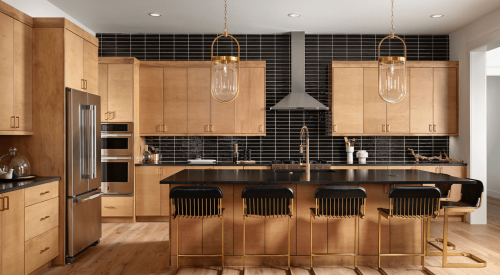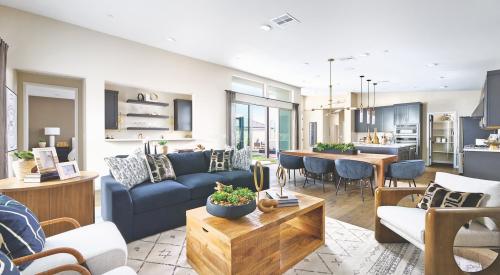Believe it or not, but Gen Z—the generation born between 1997 and 2012—is dipping the toe of its 68-million-strong cohort into the new-home buying market and builders are getting anxious about how to tailor their products and features to this generation.
![]()
A recent survey of Gen Zers over 18 by the New Home Trends Institute revealed some key insights, highlighted here with examples to inspire and consider.
What's Driving Gen-Z Homebuyers?
For a start, the survey showed that just 18% of Gen Zers own a home (1). More than half still live with their parents, while others live with a partner or a roommate, or live alone or are single parents.
What does this mix mean as this cohort ages and more of them look to buy homes? And with that, what are they willing to accept in that pursuit? Two main factors are driving Gen Zers right now: attainability and a willingness to compromise (2).
Gen Zers are pessimistic about homeownership, and attainability is the primary reason. It’s not that they don’t want to own a home, but many simply consider it out of reach, so why bother?
While attainability is an issue for almost all generations right now, the examples here highlight opportunities that appeal to Gen Zers specifically and create opportunities for them to enter the market.
RELATED
- Attainable Housing Options: Rethinking the Starter Home
- Gen-Z Homebuyer Must-Haves
- Why It's Harder for Young Adults to Move Out of Their Parental Homes in Some States
How to Make New Homes Appealing to Gen-Z Buyers
Reduce costs to make homes attainable for Gen Z
Rancho Mission Viejo in Southern California worked to make its latest village of Rienda the most attainable one yet through strategic land planning and product design choices.
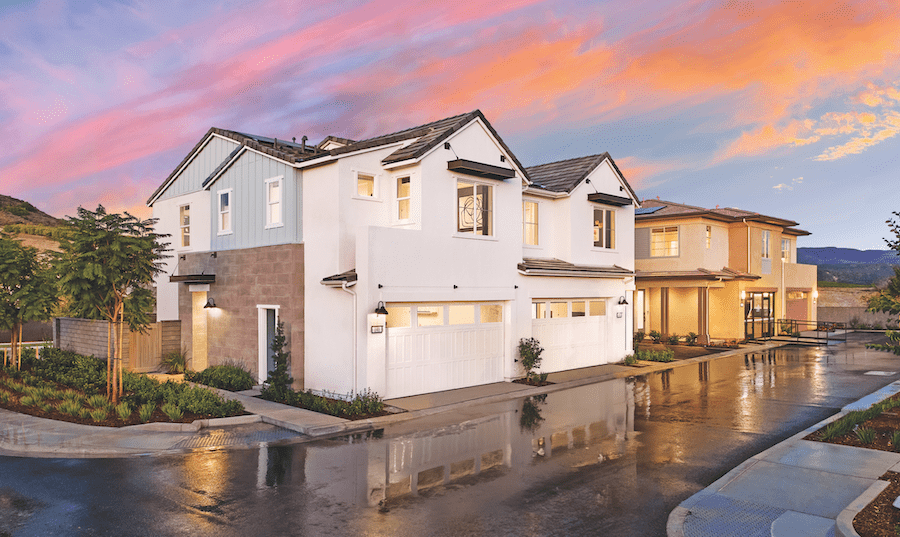
Juniper by Pulte Homes (above) at the Village of Rienda, in Rancho Mission Viejo, Calif., is a paired home layout that keeps fire insurance costs down—a particularly expensive challenge in Southern California. The smaller home sizes (1,120 to 1,558 square feet) and simple building layouts also help keep costs in check.
Meanwhile, Casa Fresca Homes, in Parrish, Fla., boasts high-quality, attainable homes that are “boldly unboring” with simple layouts that feature open great rooms, flex spaces, and plenty of storage (below).

The team also cuts costs by limiting window sizes and collaborating with suppliers to go beyond basic selections for designer packages that resonate.
Focus on offering outdoor living spaces
Forty-four percent of Gen-Z consumers consider private outdoor space more important than an attached garage (2).
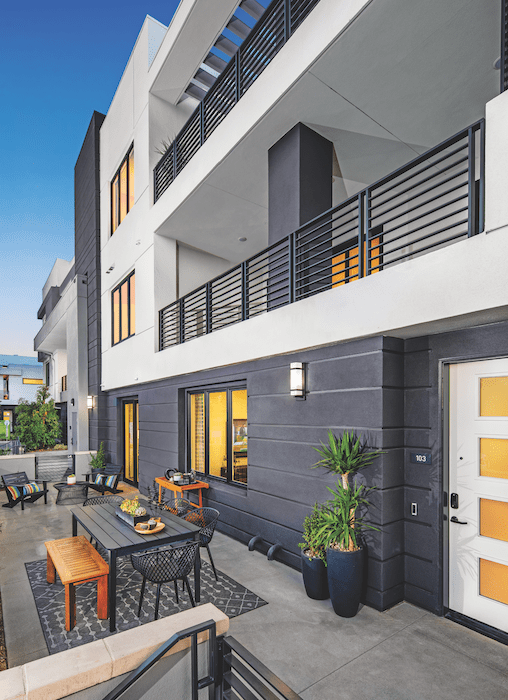
Brookfield Residential’s Terra collection of flats and townhomes at The Landing at Tustin Legacy (above), in Tustin, Calif., offers a single-level flat with a generous outdoor living space while only including a single-car garage—a huge cost savings trade-off. The front patio is spacious enough for multiple gathering areas.
Gen Z likes to cook at home, so don’t neglect the kitchen
Popular reputation aside, 66% of Gen Zers say they (or someone in their household) will cook at home somewhat or very frequently.(2) Toll Brothers’ Villa Collection is the only smaller-scale attached offering within the Sterling Grove master planned community in Surprise, Ariz. The smaller homes in the collection don’t skimp on style or space and include kitchens like this one (below) from a 1,300-square-foot flat. Note the integration of the peninsula versus an island to best use the space while still having two walls of cabinetry.
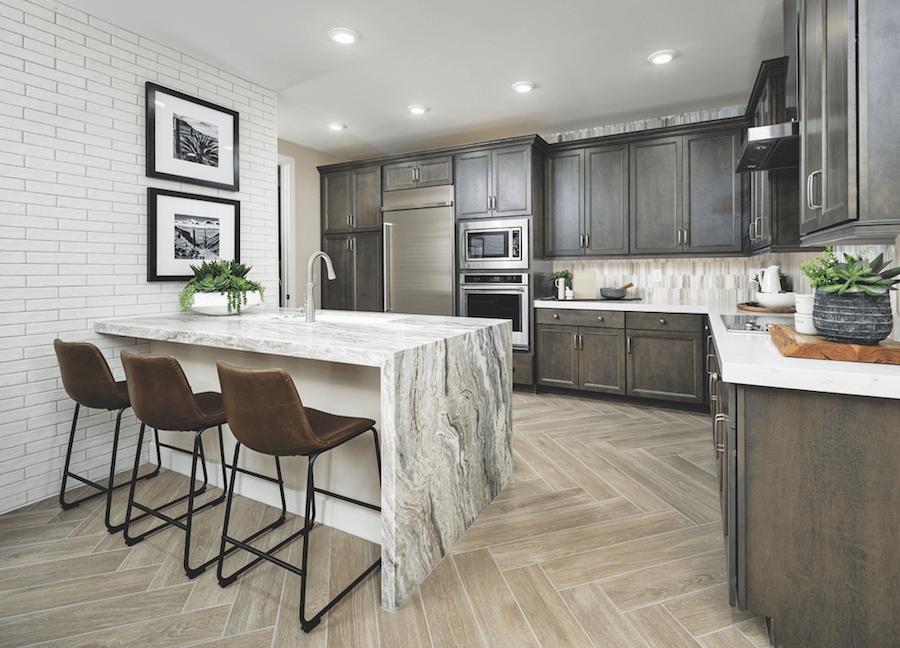
Focus less on entertainment. It’s not a deal-breaker, as fewer than half (43%) of Gen-Z consumers think it is important to have adequate space to host events and gatherings. Still, why not give Gen-Z consumers what they want at a price they can afford? Pulte Homes built three collections in the Sterling Ranch masterplanned community in Littleton, Colo.
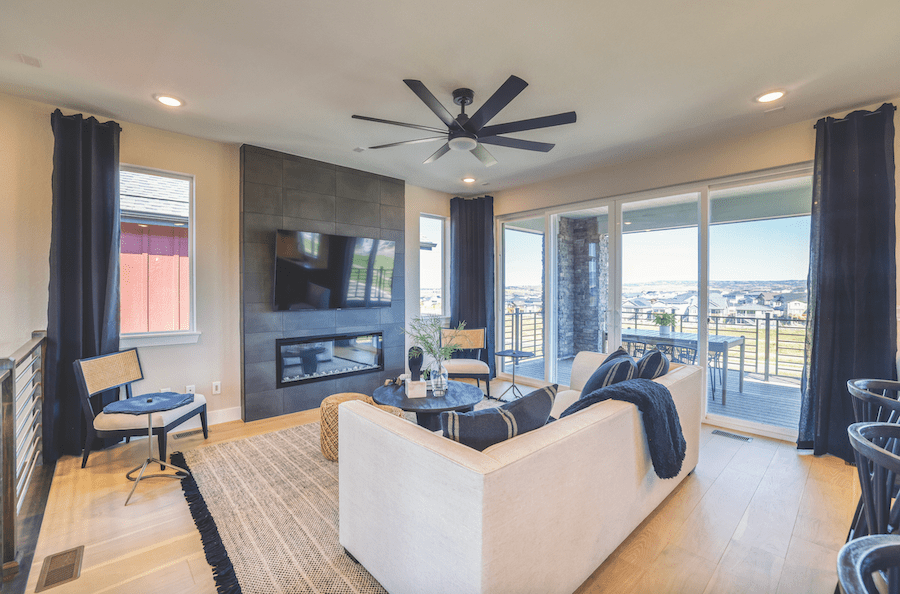
The Apex Collection (above) caters to younger buyers willing to stretch to get into a detached home in a great community. The three-story homes range from 1,875 to 2,500 square feet with open great rooms that connect with outdoor living spaces and provide multiple gathering areas.
References/sources:
(1) 2023 Current Population Survey (ASEC) data via IPUMS-CPS
(2) New Home Trends Institute by John Burns Research & Consulting, December 2023 survey of 640 Gen-Z respondents age 18+



